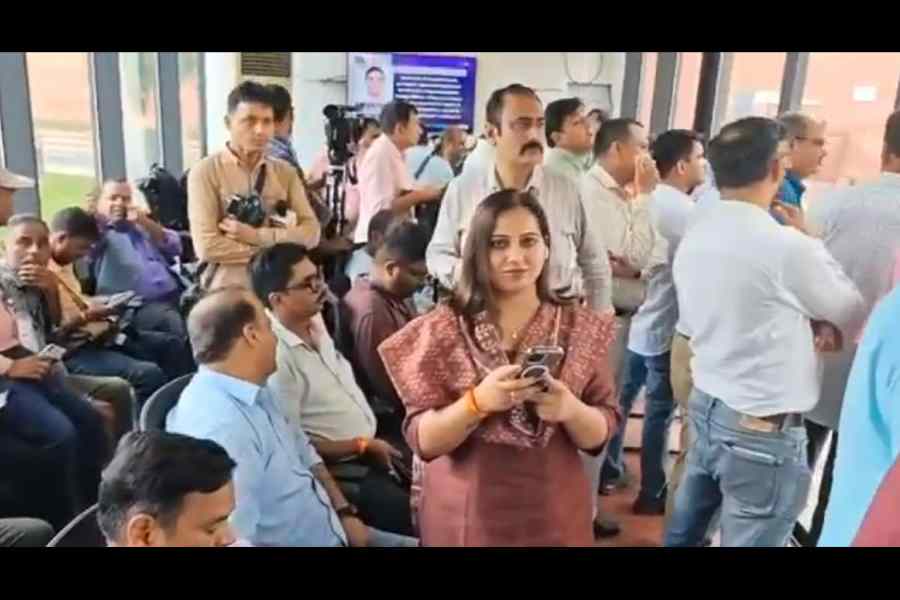Reporters, news photographers and TV camera crew on Monday “silently protested” inside Parliament premises against the increased restrictions on the media.
They sat in protest near a shed between the old and the new Parliament buildings after security staff removed them from the Makar Dwar where they normally took pictures, shot footage and spoke to MPs.
“Like every day, we were taking pictures of political leaders in the morning. The officials in charge of security came and asked us to move from Makar Dwar to a place near the media enclosure, close to Gate 12 of the old Parliament building. We sat in silent protest in the enclosure,” a photojournalist said.
Restrictions imposed on Monday relate mostly to television media crews, although the outbreak of Covid-19 has been used to limit and deter access to all media covering Parliament over recent years, an issue repeatedly protested by representative media bodies.
Before the new Parliament had been opened for sittings, photojournalists clicked pictures near the media enclosure. Now, they mostly gather in front of the Makar Dwar.
Rahul Gandhi, leader of the Opposition in the Lok Sabha, raised the issue in the House during the budget discussion, urging Speaker Om Birla to free the journalists from their “pinjra” (cage), stressing that it was another “chakravyuh”.
“Sir, one more chakravyuh has been imposed. The media people have been put in a cage. Please release them,” he said.
Birla responded strongly, reprimanding Rahul for raising questions over the directives by the Chair. Restrictions on journalists’ movements inside Parliament premises are the Speaker’s province.
Birla added that Rahul could meet him in the Speaker’s chamber on such issues.
Rahul later visited the area where the media had been restricted.
Since the Covid-19 outbreak in 2020, Parliament authorities have imposed several restrictions on journalists’ entry into the complex.
The annual pass, which allowed a journalist to enter without restrictions, hasbeen suspended during the sessions. The number of journalists from a particular media outlet allowed tocover a session has beenrestricted, too.
The Press Club of India posted on X: “Journalists stage protest in Parliament against restriction on their movement (on) the premises and also they were removed (from the) front of ‘Makar Dwar’. At this Dwar, they used to interact with parliamentarians from all sides. We demand lifting of (the) restrictions imposed on them.”
In the business advisory committee of the Lok Sabha, Congress deputy leader Gaurav Gogoi opposed the way the media had been treated, sources said.
Trinamool Congress MPs Derek O’Brien and Sagarika Ghose went to the protest site to express solidarity with the journalists.
Ghose tweeted: “Undeclared Emergency of the non-biological PM again on display.”
O’Brien told reporters that Parliament was being turned into a deep dark chamber, a dark hole.
“The media are being kept out. Mr Modi and his government are running worse than the Emergency,” he said.
“Our friends in the media must be allowed to cover Parliament. Please stop the censorship. This is completely unacceptable. I want your media owners to listen: please be strong and support your journalists.”
Shiv Sena (Uddhav) leader Priyanka Chaturvedi, too, visited the protest site.
In a statement, the Delhi Union of Journalists said: “It must be noted that those who cover Parliament are senior, accredited journalists who have been vetted and givensecurity clearance. Why should their movements be restricted and their access to MPs denied?”











